Review and images by JimoAi; edited by bmathison1972
In a lagoon within the Great Barrier Reef, the little residents are out and about their colorful home doing what animals do to survive: eat, socialize, adjust to changes, reproduce, and not get themselves eaten. What appears to be a ball of hair is one of the more predatory residents: the sea anemone. Related to corals and jellyfish, they anchor themselves to a rock while hoping to catch any unfortunate small fish or invertebrates with their venomous tentacles. However, this one has some friendly neighbours living within the stinging tentacles: a pair of ocellaris clownfish. Not only are the fish immune to the stinging cells that would kill most other fish thanks to a thick layer of mucus, the fish and the anemone form a symbiotic relationship. The fish keeps the anemone free of parasites, helps lure prey to the anemone, protects the anemone from predators like butterflyfish, and feeds the anemone with its waste and scraps, while the anemone provides shelter and protection for the fish and feeds the fish with its scraps too and dead tentacles. Such adaptations means that one couldn’t survive without the other in the wild.
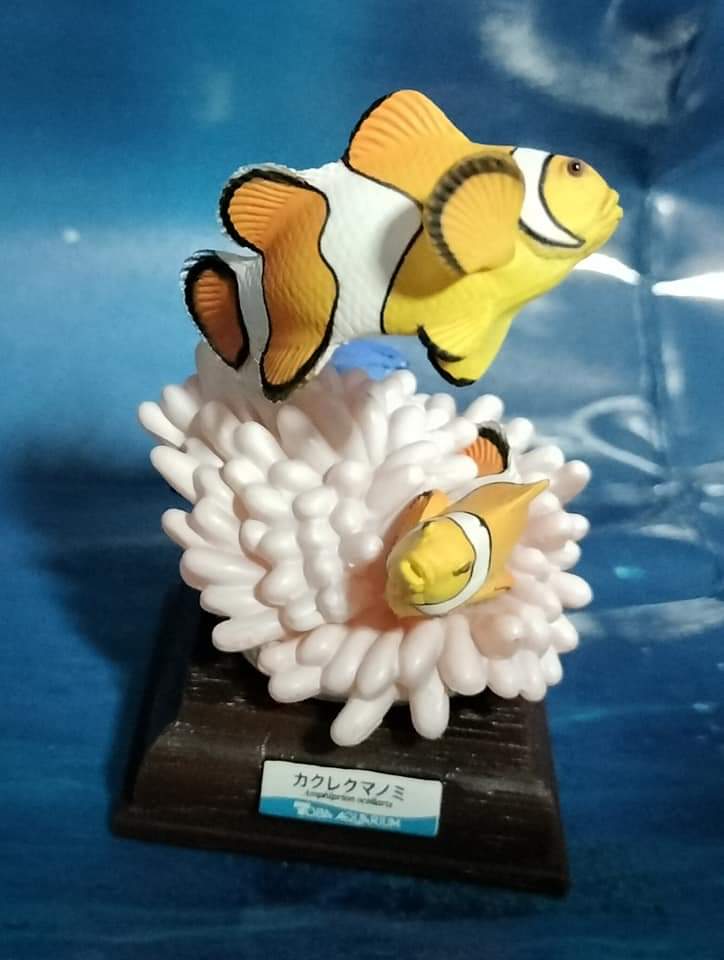
About the figure: The anemonefish, which is marketed and sculpted after Amphiprion ocellaris, measures 3.9 cm which puts it within the 1:1 to 1:2.5 scale depending on the size of the specimen you’re going for. The figure is sculpted depicting a mini diorama of the symbiotic relationship of sea anemone and anemonefish. The anemone, which is likely Heteractis magnifica, or the magnificent sea anemone, is one of the 3 species of sea anemone that is hosts A. ocellaris. The anemone serves as the main base of the figure and measures 2 cm in diameter which puts it at 1:10 for a small specimen or 1:25 for a very large specimen. In the background behind the anemone is a pair of blue damselfish (also known as blue devils, Chrysiptera cyanea), measuring 2 cm each, putting them in the 1:2 to 1:4.25 scale. The figure also comes with a square wooden base which is removable and a leaflet with the information of the species.
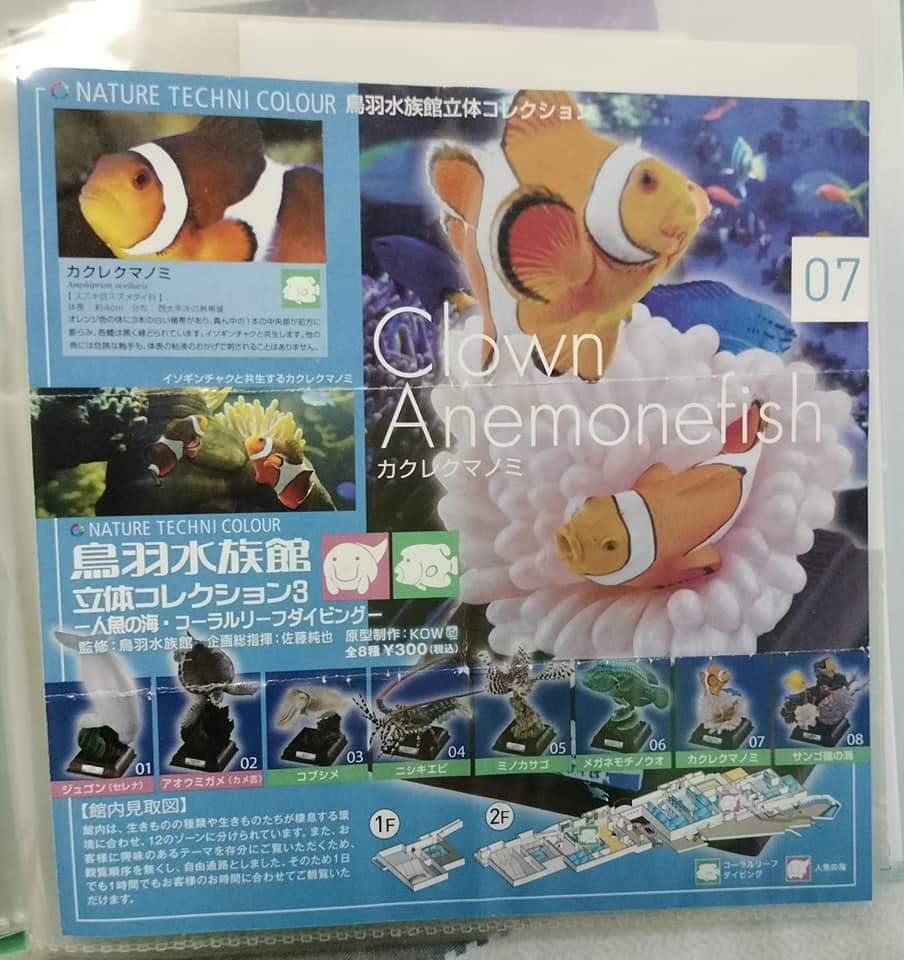
The figure features two anemonefish: one swimming out of the venomous tentacles and one is only half of a fish swimming within the carpet of tentacles. We’ll be taking a look at the one that is a full fish. The figure is sculpted in a rigid plastic and in a swaying pose, which is how these fish swim, making it similar to the larger Yujin version. The figure’s main colours include a light orange with a yellowish wash on the head region. Keep in mind that this is the Toba Aquarium variant and this is slightly more yellowish than the secret Ocean Set version. Fine checkerboard patterned scales adorn the main body and fin rays adorn all the fins. The pectoral fins are seperate pieces to the main body. I didn’t bother to count the number of fin rays as let’s be real: how are they going to sculpt the accurate fin rays on such a tiny figure. The figure is sculpted in a translucent plastic as evident by the transparent edges on the pectoral, second dorsal, anal, and caudal fins. The eye is very small but painted a dark brown with a black pupil. There’s 3 stripes in all, outlined by a thin black line which is more typical of A. ocellaris. There is a rod connected on the tail, making it look off when you choose display with just the fish but what’s this? Kitan Club engineered the rod connecting the fish to the anemone to be one of the stinging tentacles. Clever work, there, Kitan Club!
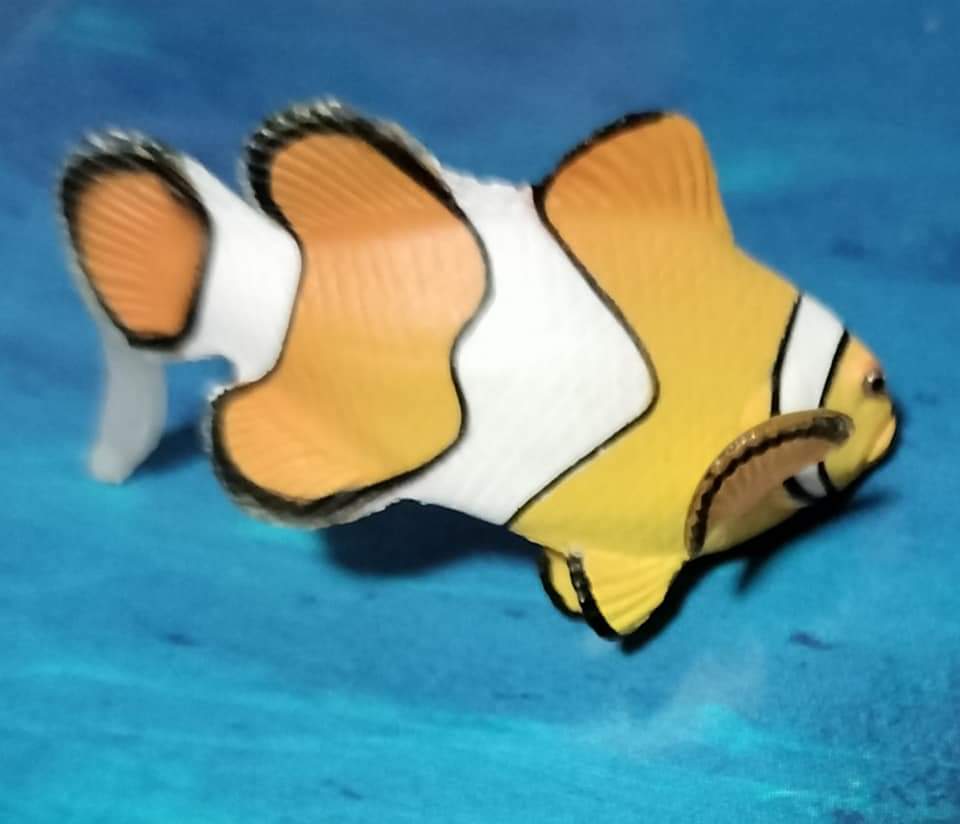

For the second anemonefish, there isn’t much to talk about as it is literally half a fish. It is turned to the right and connected via a peg on the bottom. The sculptural detail is almost the same, albeit slightly less than the charismatic individual frolicking out of the anemone and the pectoral fins are the same sculpt as the body.
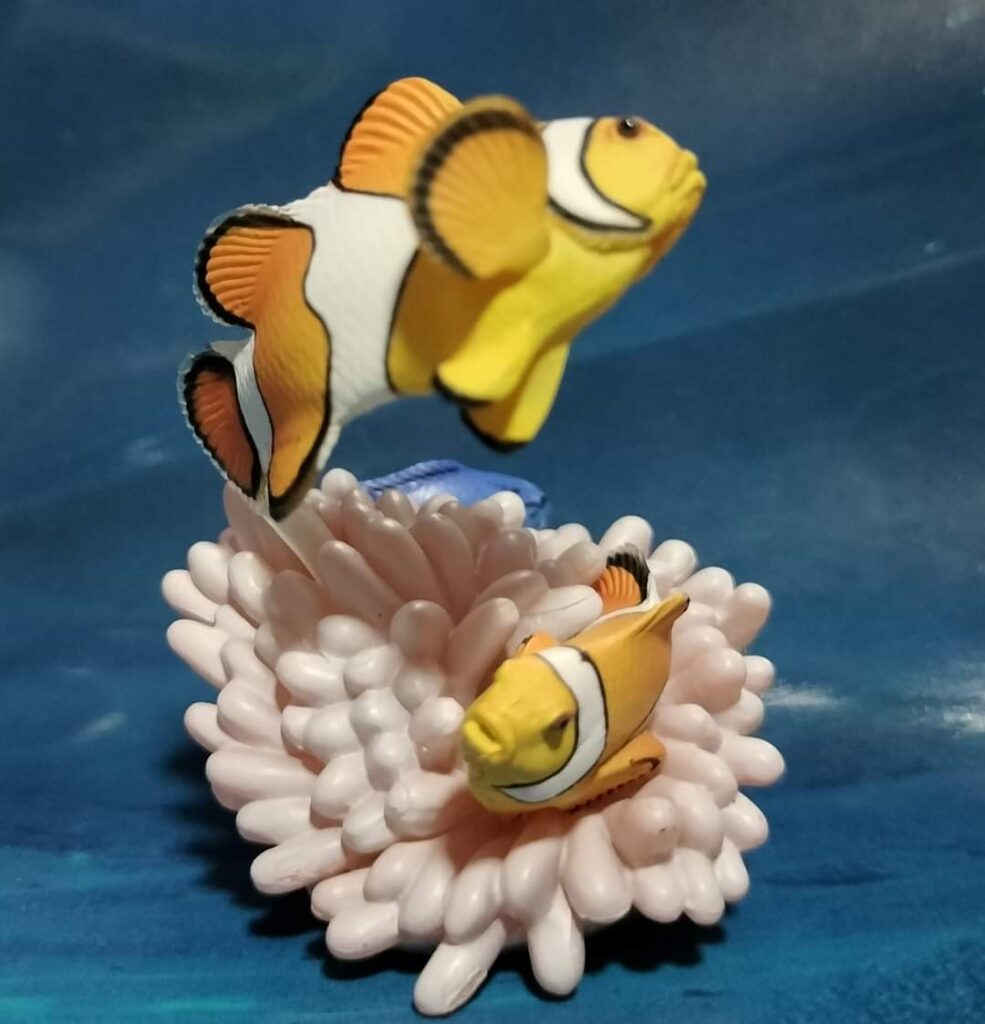

Going on to the sea anemone, it is what you would expect but more! The tentacles are a translucent pink colour and the base is a light grey with white checkerboard pattern and a slight off white rim just below the tentacles. There’s live rock that is the same sculpt as the anemone with a grey main colour and patches of pink and green to simulate algae growing on it. Overall, I feel the anemone is just as good, if not better than the main stars of this mini diorama and it serves as a really good standalone piece without the fish (or you could put a different anemonefish figure on it)!

And for an extra treat, there is a pair of blue devil damselfish behind the anemone! Both fishes are sculpted together and cannot be separated and are sculpted swimming as a pair. Despite being only 2 cm each, the figure features the same level of sculptural details in the scale, albeit the paint job is way more simplistic here. The figure is painted in a sapphire blue with a darker blue wash on the edges and with black on the pupils, facial speckling, and on the central rims of the dorsal, anal, and caudal fins. There is a peg to connect both fishes to the live rock and they better stay away from the tentacles or they won’t be as lucky as the anemonefish!
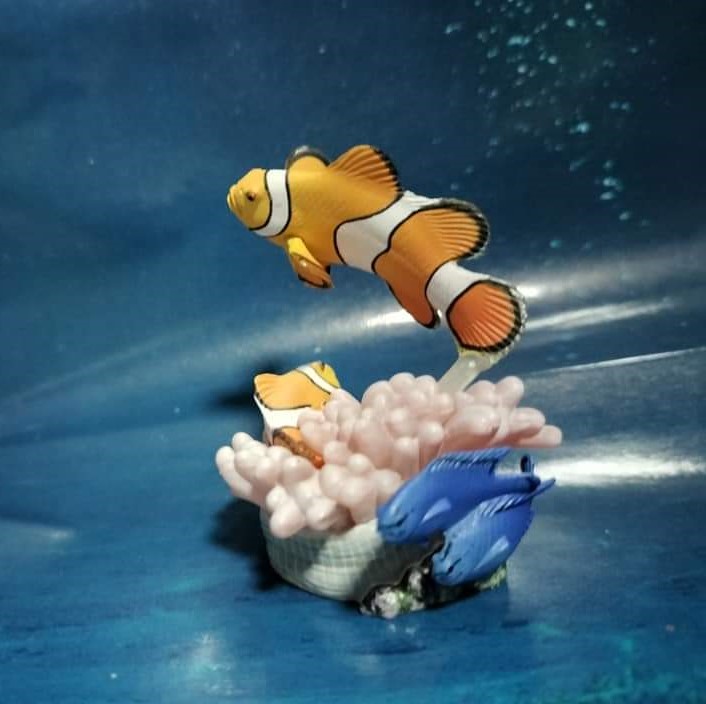
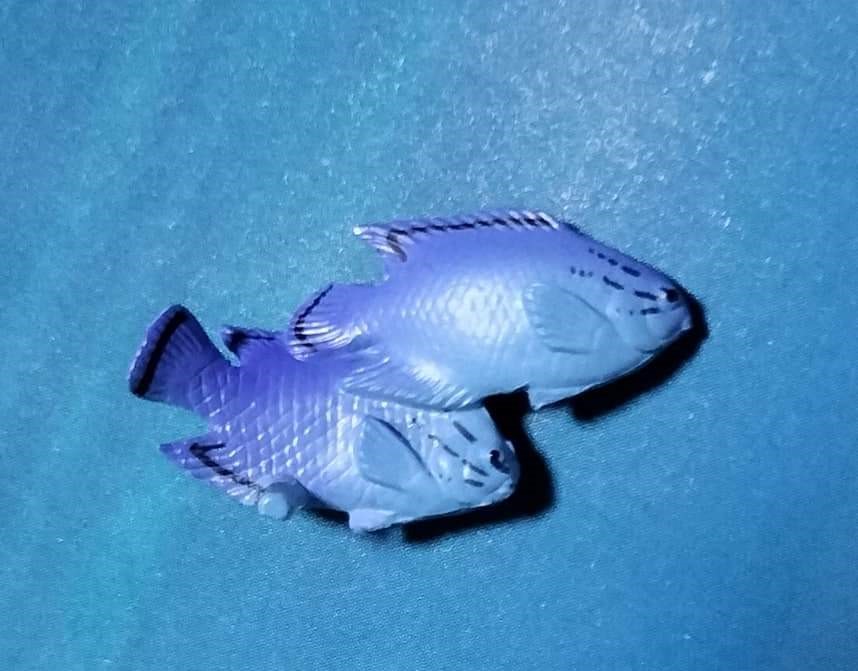
Overall, I feel this is the definitive figure of A. ocellaris and it perfectly displays the symbiotic relationship of sea anemone and anemonefish, with a little bit extra. The Toba Aquarium set from Kitan Club/Nature Techni Colour was released in 2012 and for a short run in 2014 and is thus retired now. However, since the clownfish (and Napoleon wrasse) were re-released by Ikimon, they are more of intermediately priced at roughly 40-50 USD as opposed to the crazy expensive broadclub cuttlefish which easily fetches at least 400 USD, often more. Your best bet is either Mercari or Japanese Yahoo! auctions, with many listings under 20 (not factoring shipping which would cost a fair bit more). Also it’s worth noting that due to the brittleness of the main anemonefish, it’s obvious that this figure is only meant for display, although I have took mine out to ‘play’ and by that, admire the details of the figure, and I have not broken it.
With the Yujin ocellaris clownfish:
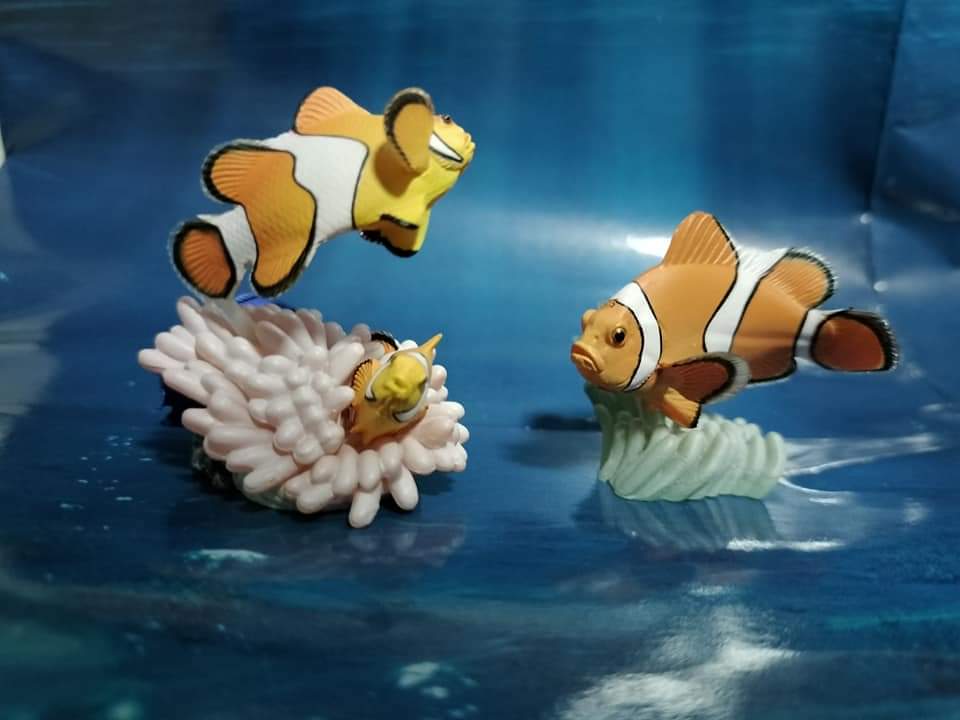
Bonus section: Happy 20th Anniversary to the project that made the anemonefish a mainstream name amongst marine biologists: the Finding Nemo franchise. And here’s 2 tributes to the films.
With the Kaiyodo great barracuda, recreating the infamous scene in which the movie would be more messed up if it were scientifically accurate (note, barracudas do not eat fish eggs, let alone tiny anemonefishes).
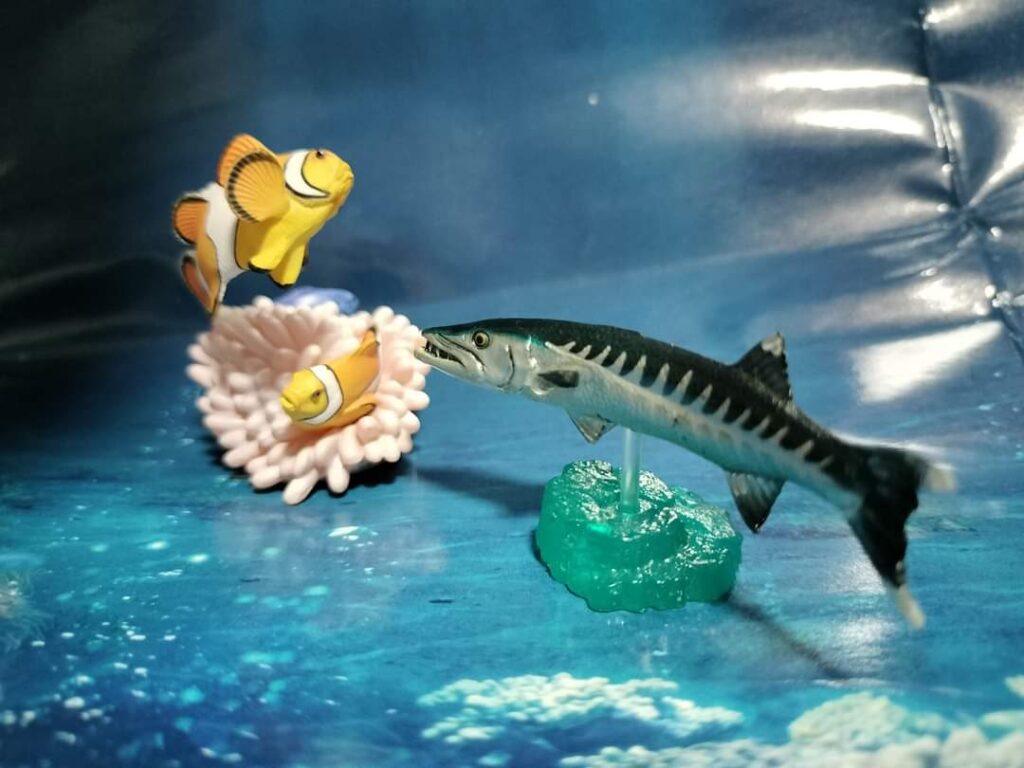
With the other cast of the movie (sans the blue whale, Jacques the cleaner shrimp, and Chum the shortfin mako):
Top row: Bubbles (yellow tang by Kaiyodo), Bloat (longspined porcupinefish by Yujin), Gurgle (royal gramma by Yujin), Deb (black-and-white damselfish by Yujin), Peach (repainted Coral Reef TOOB Starfish by Safari Ltd.), Gill (Moorish idol by Yujin), Dory (regal tang by Yujin), Tad (yellow longnose butterflyfish by Yujin), Sheldon (yellow seahorse by Eikoh), Pearl (flapjack octopus by Kaiyodo)
Bottom row: Mr. Ray (spotted eagle ray by Kaiyodo), Crush (green sea turtle by Takara Tomy A.R.T.S.), Anchor (great hammerhead by Schleich), Marlin (ocellaris clownfish by Ikimon), Bruce (great white shark by Schleich)
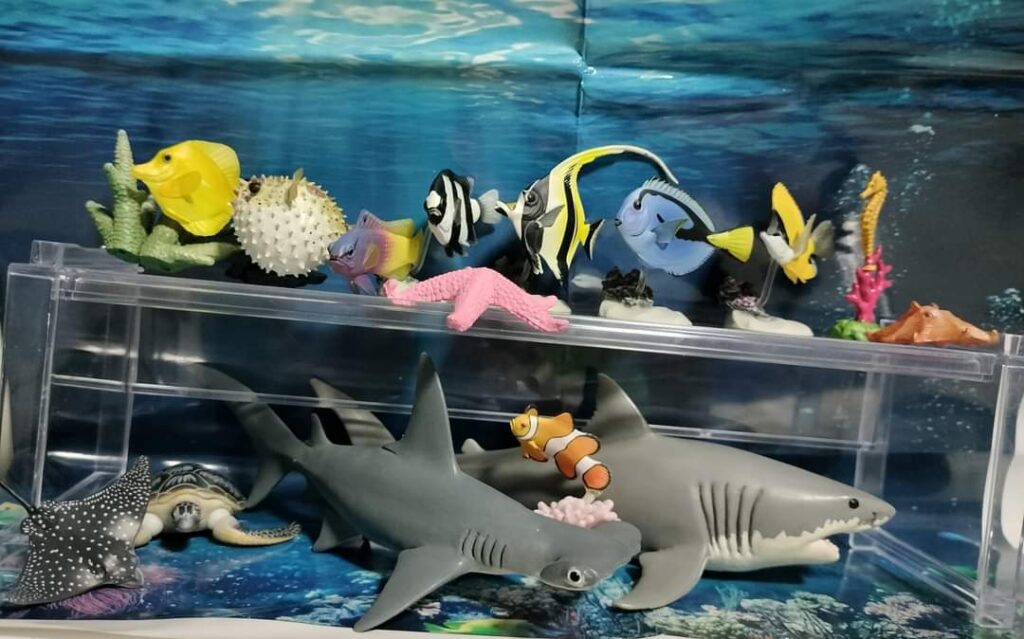
Disclaimer: links to Ebay and Amazon on the AnimalToyBlog are affiliate links, so we make a small commission if you use them. Thanks for supporting us!




Author’s note: It looks like this figure would be rerelease next April alongside the whale shark, Humpback whale, Bottlenose dolphin, green turtle and Napoleon wrasse!